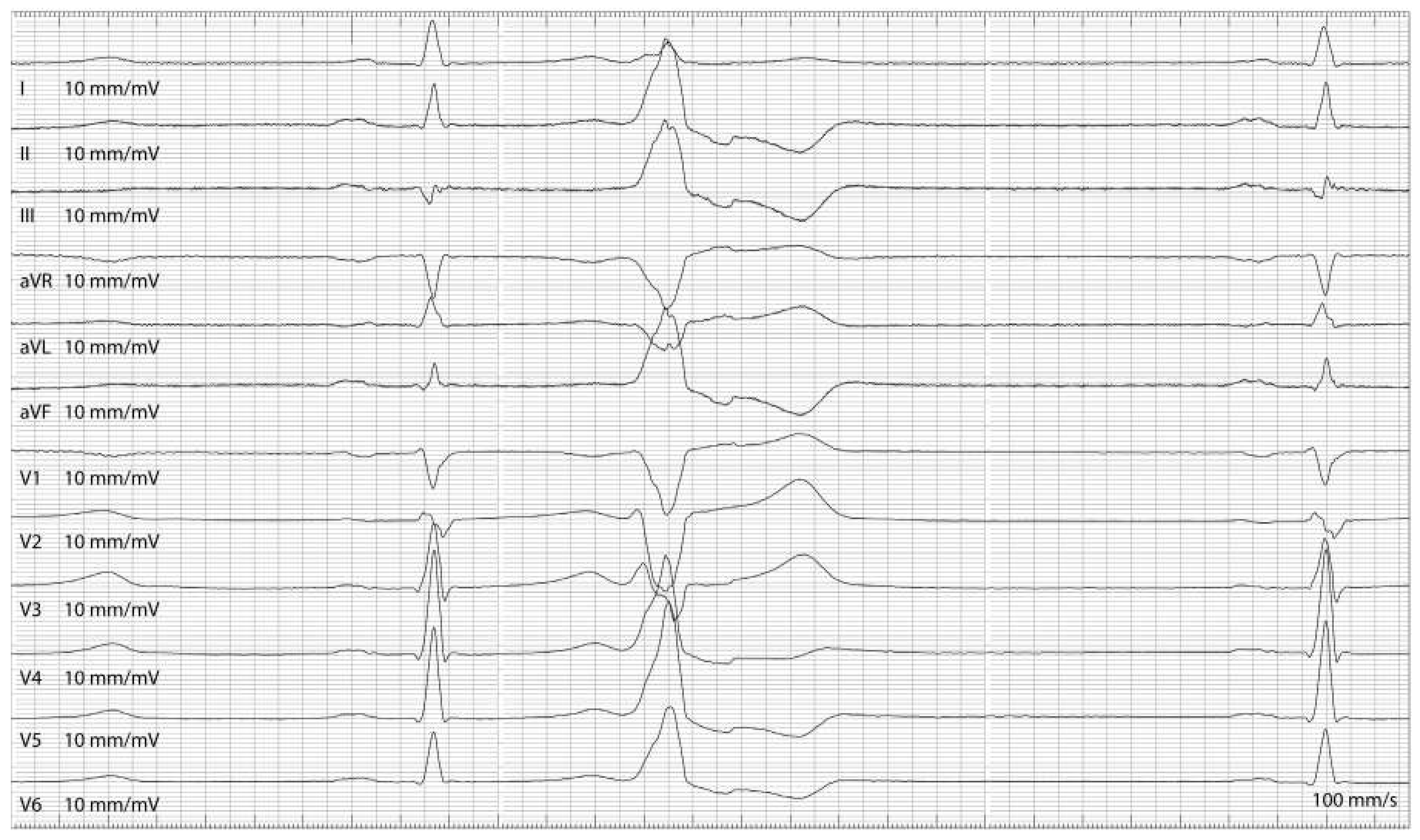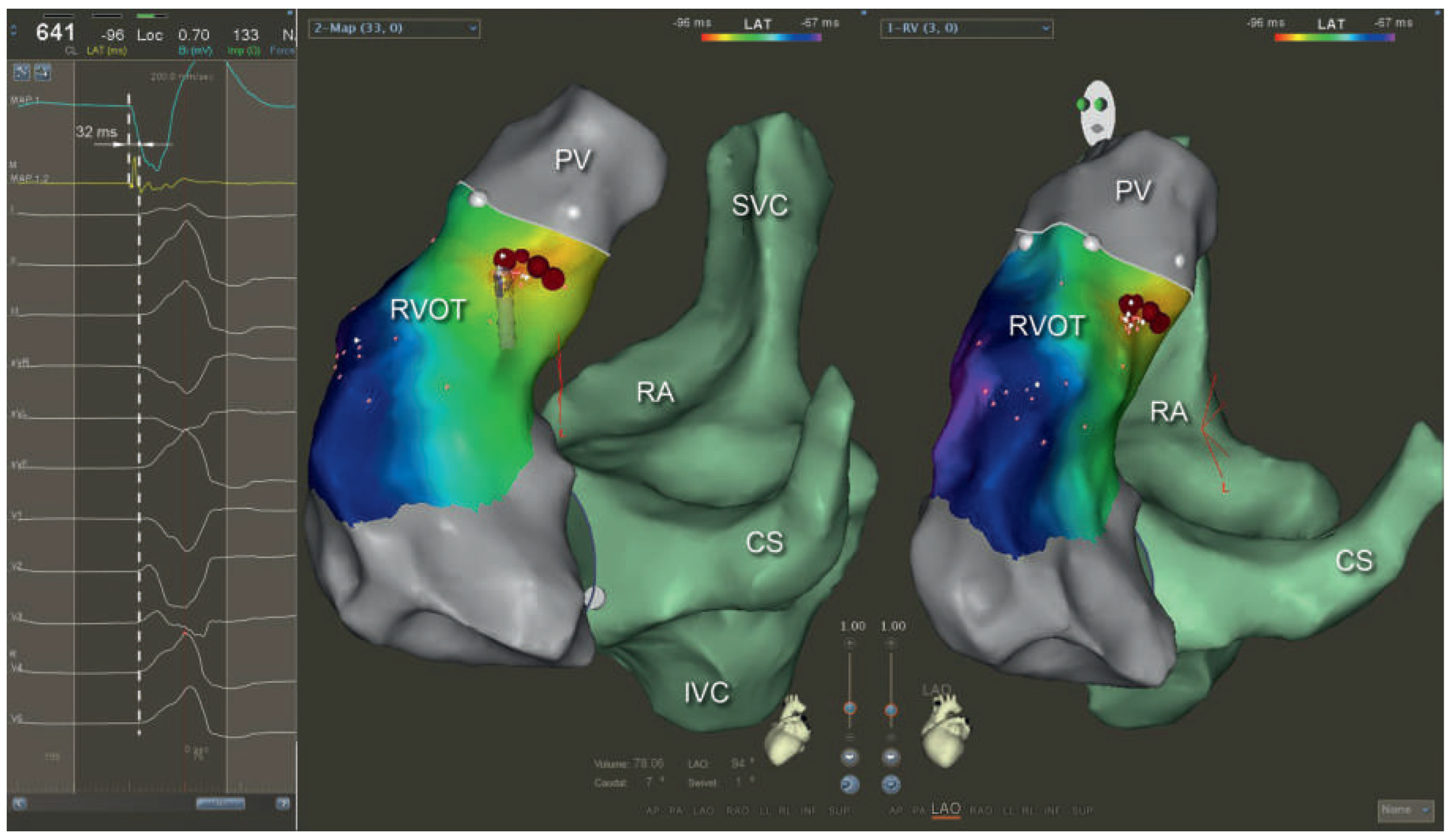Fluoroscopy-Free Ablation of Premature Ventricular Contractions
Abstract
Case report
Discussion
Disclosure statement
References
- Mühl, A.; Kühne, M.; Sticherling, C.; Knecht, S. Fluoroscopy-Free PVI With nMARQ in a Patient With a PFO. J Cardiovasc Electrophysiol. 2015, 26, 906. [Google Scholar] [CrossRef] [PubMed]
- Knecht, S.; Sticherling, C.; Reichlin, T.; Pavlovic, N.; Mühl, A.; Schaer, B.; et al. Effective reduction of fluoroscopy duration by using an advanced electroanatomic-mapping system and a standardized procedural protocol for ablation of atrial fibrillation: ‘the unleaded study’. Europace. 2015. Epub ahead of print.


© 2015 by the author. Attribution - Non-Commercial - NoDerivatives 4.0.
Share and Cite
Kühne, M.; Knecht, S.; Mühl, A.; Reichlin, T.; Sticherling, C.; Osswald, S. Fluoroscopy-Free Ablation of Premature Ventricular Contractions. Cardiovasc. Med. 2015, 18, 357. https://doi.org/10.4414/cvm.2015.00377
Kühne M, Knecht S, Mühl A, Reichlin T, Sticherling C, Osswald S. Fluoroscopy-Free Ablation of Premature Ventricular Contractions. Cardiovascular Medicine. 2015; 18(12):357. https://doi.org/10.4414/cvm.2015.00377
Chicago/Turabian StyleKühne, Michael, Sven Knecht, Aline Mühl, Tobias Reichlin, Christian Sticherling, and Stefan Osswald. 2015. "Fluoroscopy-Free Ablation of Premature Ventricular Contractions" Cardiovascular Medicine 18, no. 12: 357. https://doi.org/10.4414/cvm.2015.00377
APA StyleKühne, M., Knecht, S., Mühl, A., Reichlin, T., Sticherling, C., & Osswald, S. (2015). Fluoroscopy-Free Ablation of Premature Ventricular Contractions. Cardiovascular Medicine, 18(12), 357. https://doi.org/10.4414/cvm.2015.00377



